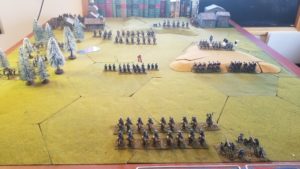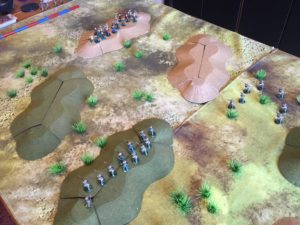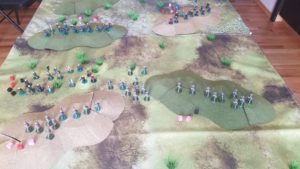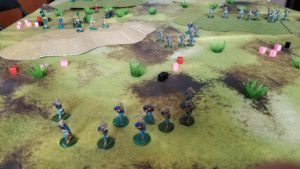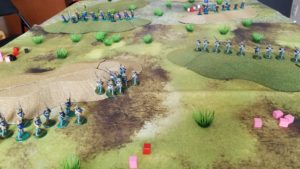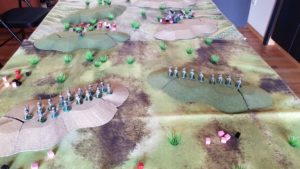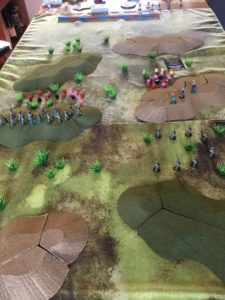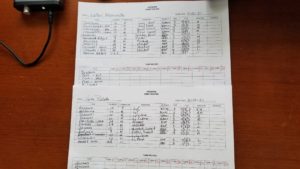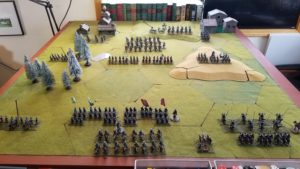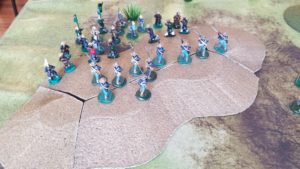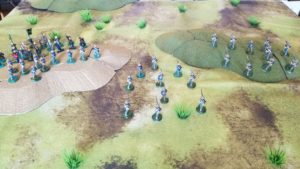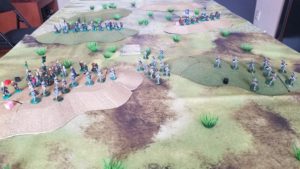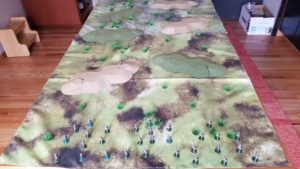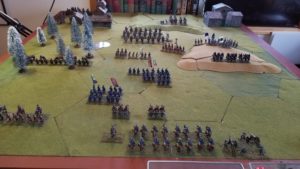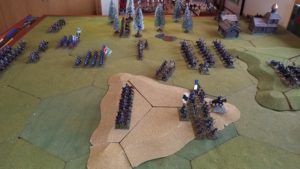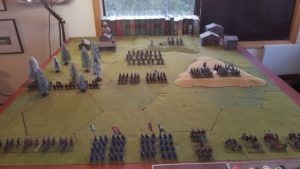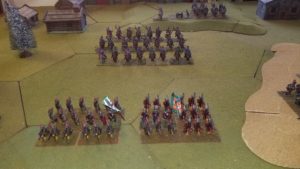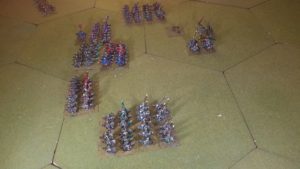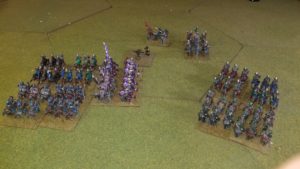The daily game playing momentum has slowed. Surprising, because once I get going, the game’s very enjoyable.
Interesting set of rules. Despite the many charts and modifiers, the play is quick, and far less procedural than Wargames Research Group (WRG) 6th Edition. Husaria’s narrative allows some latitude in application.
For example: How far does a unit retreat? Is it full move, move modified for formation changes, does the unit deduct for turning 180 degrees, or what? Not complaining because it allows for applying some common sense.
Another puzzler is what happens when a unit fails its Charge Initiative Test? Does the target unit still have to take a Response Test. The answer is “Yes” in WRG 6th . Here, I’m not so sure. I’ve tried it both ways and have decided that if the unit fails its Initiative Test, the target does not have to test. An outcome of both units retreating is, while possible, not that plausible.
This game is full of frictions. First off, it is very difficult for “Experienced” units (which make up the bulk of units in this game) to pass the Initiative Test to charge and also difficult for them to roll for positive Response Test outcome. As a result, and I’m sure this was intended, plans do not go as anticipated.
This breakdown has caused both generals to scamper around the battlefield changing orders. The order changes are not formulated until the last phase of the turn, communicated during the next turn’s movement phase, and take effect the following turn. By that time, events may have rendered the new order moot or even counter-productive.
One interesting rule involves following up a unit that “gives ground” after losing Combat (melee). The victorious unit can only follow if it has the distance needed remaining from its charge movement allowance. If not, the victorious unit must charge again the next turn. This happened to the Russian cavalry in the center. They failed the subsequent charge test, remained stationary, and were then forced to retreat as a result of Polish musketry.
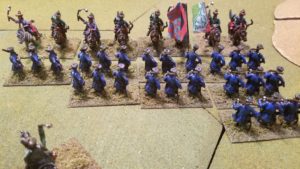
If you enjoy some chaos in your gaming, this rule set provides it. For me, especially playing solo, this is not a bad thing. And, I don’t mind working within a relatively loose framework. Again, this is after playing the very scripted WRG 6th Edition Rules.
Here’s a summary of the past five (5) turns.
The Polish attempt to hold the east hill using Ratjars failed. However, the Cossack Infantry also withdrew (see comments about mutual failed tests, above). The Cossacks are now working their way back up the hill, but staying on the reverse slope to avoid artillery bombardment. The Polish commander has sent his remaining Ratjars to drive off the Cossacks.
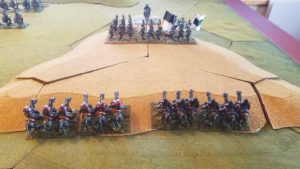
The Haiduks drove off the first wave of Russian cavalry, and holds the center. The Polish Pancerni remain uncommitted, with the Hussars still to their rear and off the table.
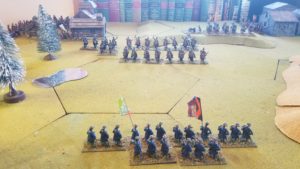
The Russian Dragoons holding the forest have been forced to withdraw, with Polish Haiduks advancing through the forest towards the East village.
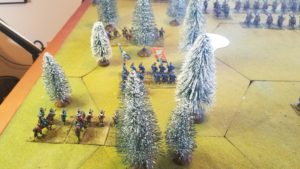
The Russian Streltsy have retreated to the villages, with orders to defend. The Russian heavy cavalry is beginning to deploy to support another attempt to break the Haiducks holding the center.
